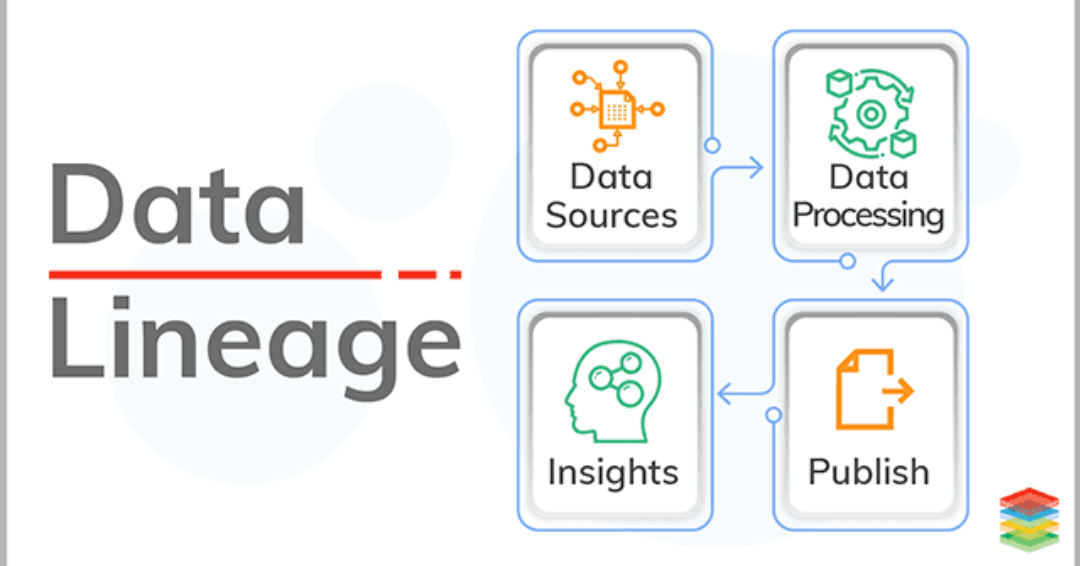Overview
The path that data takes from conception to transformation over time will be referring to as data lineage. It describes the origin, movement, features, and consistency of a dataset. Databases excel at inserting, modifying, querying, removing, and representing data throughout its current state. Data consistency is essential to developers because it allows APIs to perform the correct transactions. They also allow applications to retrieve accurate information. Data scientists working on machine learning models and citizen data scientists making data visualizations are two other types of data users. Snapshots and backups may be sufficient for comparing older data sets for developers and data scientists, but they are insufficient for monitoring how the data changed.
It is becoming an increasingly important data governance activity as more companies invest in data, analytics, and machine learning. While some organizations are driven by regulatory requirements to develop data lineage capabilities, others pursue data processing accountability. Still, others see data lineage as a core competency in the democratization of data and analytics.
Data lineage
It is a data lifecycle that involves the source of the data as well as where it goes over time. The ability to monitor, control, and display data lineage aids in debugging the data flow process. Moreover, they simplify tracking errors back to the data source. Recognizing data curation value or data lineage is a common denominator for all effective data-driven marketing organizations. This is to ensure that the data being used for creative customer experience or other uses is accurate.
The term “data lineage” refers to the methodologies and methods used to reveal data’s life cycle. They will assist in determining who, where, where, why, and how data may change. It’s a subset of metadata management that allows data users to understand the meaning of data they’re using for decision-making and other business purposes. It can be thought of like the GPS of data, providing turn-by-turn directions and a visual representation of the entire mapped path. The importance of capturing and interpreting data lineage can be summing up as follows:
Compliance requirements:
To remain on government regulators’ good side, many companies must enforce data lineage. For capital market trading firms to comply with BCBS 239 and MiFID II regulations, data lineage in risk management and also reporting is essential. Automating lineage extraction from source systems can save considerable IT time and reduce risks for large banks. The ADaM standard calls for traceability between research and source data in pharmaceutical clinical trials and in many more places.
A data-driven culture:
Data lineage issues can easily trip up organizations developing citizen data science systems. They create key performance indicator dashboards, managing a hybrid BI (business intelligence) framework, and taking other steps to become data-driven organizations. They can use data lineage resources to understand the data sources better, flows, and laws surrounding the data they’re querying, reporting on, or incorporating into data visualizations.
Transparency:
Many working on products, facilities, and workflows want to improve data quality, set up master data hubs, and also invest in master data management. We use them commonly in these techniques to provide clarity on market rules and adjustments.
Analytics and machine learning:
ModelOps and the machine learning life cycle include data lineage as well. Capturing and reviewing data lineage will aid in determining when new or modified data necessitates retraining and model drift reduction. Since machine learning models are often inputs to services, applications, and downstream analytics, it’s also essential to keep track of the entire model’s life cycle.
Data Lineage can boost the business process.
Setting priorities and identifying realistic objectives, particularly for organizations with numerous data sources, technologies, and consumption patterns may be the key to success. The following are some examples of how businesses use data lineage practices and tools in vital business processes.
- In completing data lineage across 100 applications, one bank improved productivity by 80 times and saved over $1 million.
- In supply chain management, such as providing shoppers with farm-to-grocery accountability, they are essential.
- Nonprofits can track contributions to particular projects and show how the funds are used to make an impact.
Why track data lineage for your organization?
In order to become a true data intelligent enterprise, tracking data lineage is a must. Large organizations have data strewn around the enterprise in 100s to 100,000s of systems and data sets, including on-premise, hosted, and cloud. Furthermore, data is at an exponential pace, making it much more difficult to track where data comes from and how it has changed over time. By offering an end-to-end visualization of where data is processed, where it came from, and where it is going, data lineage benefits both IT and the business consumer. This visibility allows IT to complete its tasks more quickly and efficiently. They assist businesses in gaining trust in their data, allowing them to make more informed business decisions.
Data Lineage: From COVID-19’s Origins to Data-Driven Business
Data lineage tools monitor how data flows in and out of a company’s systems. They collect end-to-end lineage and ensure that proper impact analysis can be conducted in the event of data asset issues or adjustments as they pass through pipelines.
The nature of the coronavirus has sparked several hypotheses. In February and early March, it found at least eight distinct viral lineages in 29 patients. This indicates that there was no geographic patient zero and that the pathogen was introduced in several ways. Understanding viral lineage is critical in preventing this and other future pandemics, and understanding the origin of data is critical to running a successful data-driven company.
What are the benefits of improving your data lineage?
Understanding lineage is also beneficial to the current analytics and data application. We can achieve transparency by identifying the source of transferred data during its lifecycle. It also gives companies the ability to build digital pipelines that strengthen policies. Consider good lineage to be similar to a comprehensive medical file: all essential details are registered and readily available upon request. Another factor to consider is how enhanced lineage affects downstream research. Data changes as it passes, and if we distribute them, it may become corrupted. Reasons to learn more about your data lineage include:
- Assist companies in adhering to regulations.
- Assists with effects analysis and information framework improvements.
- Improves the data flow and process consistency.
Bottom Line
To make data-driven decisions effectively, a company must first understand the data they’re dealing with, what it means, where it came from if it’s complete, and if it’s reliable. It’s almost impossible to decode this data without data lineage. As a result, many businesses invest in data lineage because it provides the complete background for their data. This means that reliable information is mainly to make business decisions.
Do you find this blog interesting? Yes, then check out our rest blogs too. Please browse our website to know more about us and our services. You can also contact us if you have any queries or questions. We are happy to hear from you!




